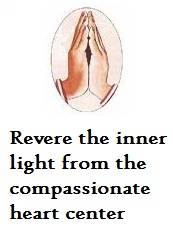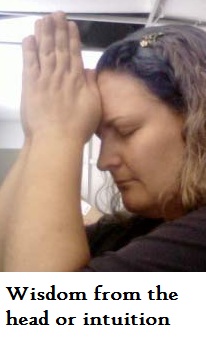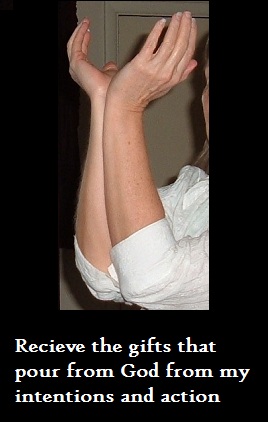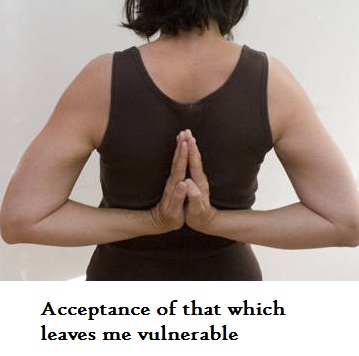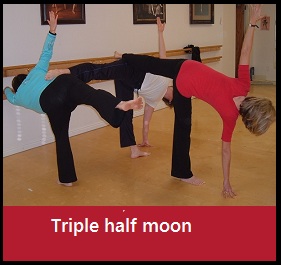We will explore and play with several hand mudras in our class this week. It’s a lovely way to bring meaning and intention into your practice. There can be many layers of meaning with each mudra and knowing them can enhance your personal practice.
The hands folded in front of the heart center is called the Anjali Mudra. There are several ways to do this and each carry a meaning that could be very universal or personal. Here is a few of those meanings and mudras:
The offering is a gesture that is the act of giving an offering or receiving an offering. You must cup your hands to hold the offering. When beginning a yoga practice, you offer your desire or intention for that practice. You are willing and open to receive whatever benefits your body needs after that practice. It’s a way of saying, “I’m here. I’m awake, I’m ready to offer my energy and attention to the practice.”
The traditional Anjali mudra is the palms folded together with a small space left in the center and the thumbs touching the heart center. This space in the center represents the hidden inner light that is within each person. It is protected and revered and connected to the compassionate heart. The head bows to this heart center and the gaze is also brought downwards to the hands. All focus and concentration is on this inner flame and intention.
Another name of this mudra is the Atmanjali mudra. Atman is the eternal soul. Its the part of a person that’s beneath all the koshas or layers of thought, emotion, breath, and the physical body. When we say Namaste with the Anjali mudra, it is this inner soul that we recognize and honor.
Sometimes the folded palms are brought to touch the forehead or third eye chakra. This is an especially auspicious movement. One meaning is to honor another with even greater reverence and consideration. My own personal meaning is to request wisdom from the head, logic, intuition in addition to the heart center so that all the best parts of me are included in my decisions and practice.
The blooming lotus is symbol of purity and is a mudra belonging to the heart chakra. The heart is the coming together of all the lower chakras and higher chakras. When they meet at the heart center then the lotus of the heart blooms. That is also my own personal meaning; when my intentions are coming from my heart and wisdom centers, then they can bloom into the highest and best actions and consequences.
If I held a bowl up in the rain, I would easily catch the raindrops. The next mudra is one that represents an open container to receive what drops from heaven. The elbows squeeze together and the hands are in a receptive bowl shape. This is not a mudra I have seen anywhere else. It came from a creative student in a class years ago.
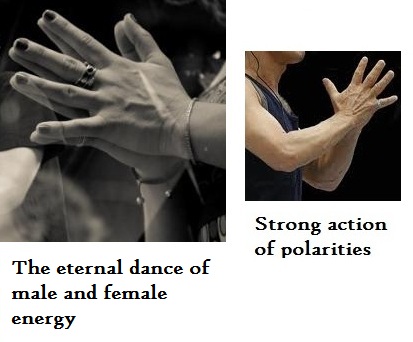
Another version of Anjali mudra is where the hands are more energetic, fingers open wide and and the palms are evenly but firmly pressing into the center. The hands might be farther from the body, level with the elbows or even fingers pointing straight ahead. To me this version represents that the two polar opposites in life are very active and sometime trying to overpower the other. This vigorous dance between male and female energy is what powers the creative world.
And finally the reverse Namaste hands is the prayer position done behind the back. My personal interpretation of this mudra is that I am giving my complete acceptance of those things that leave me vulnerable. The heart center is completely exposed and the hidden inner light is behind me so it is a scary and vulnerable position. I must develop trust that all things occur for my highest and best good to feel comfortable in this position.
My favorite explanation of the spoken Namaste at the end of class comes from Aadil Palkhivala as recorded in Yoga Journal
The gesture Namaste represents the belief that there is a Divine spark within each of us that is located in the heart chakra. The gesture is an acknowledgment of the soul in one by the soul in another. Nama means bow, as means I, and te means you. Therefore, mamaste literally means “bow me you” or “I bow to you.”
To perform Namaste, we place the hands together at the heart charka, close the eyes, and bow the head. It can also be done by placing the hands together in front of the third eye, bowing the head, and then bringing the hands down to the heart. This is an especially deep form of respect. Although in the West the word “namaste” is usually spoken in conjunction with the gesture, in India, it is understood that the gesture itself signifies Namaste, and therefore, it is unnecessary to say the word while bowing.
We bring the hands together at the heart chakra to increase the flow of Divine love. Bowing the head and closing the eyes helps the mind surrender to the Divine in the heart. One can do Namaste to oneself as a meditation technique to go deeper inside the heart chakra; when done with someone else, it is also a beautiful, albeit quick, meditation.
For a teacher and student, Namaste allows two individuals to come together energetically to a place of connection and timelessness, free from the bonds of ego-connection. If it is done with deep feeling in the heart and with the mind surrendered, a deep union of spirits can blossom.
Ideally, Namaste should be done both at the beginning and at the end of class. Usually, it is done at the end of class because the mind is less active and the energy in the room is more peaceful. The teacher initiates Namaste as a symbol of gratitude and respect toward her students and her own teachers and in return invites the students to connect with their lineage, thereby allowing the truth to flow—the truth that we are all one when we live from the heart.



